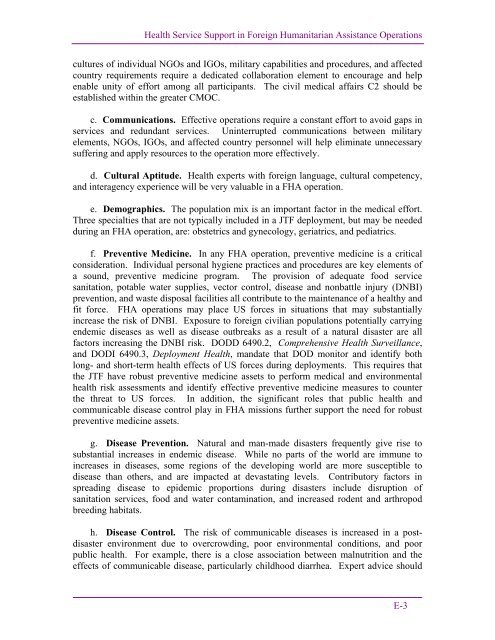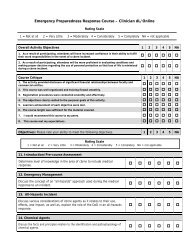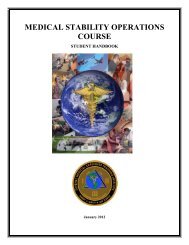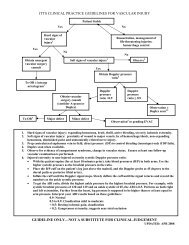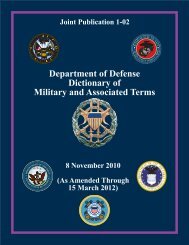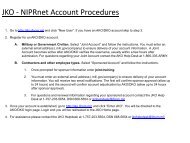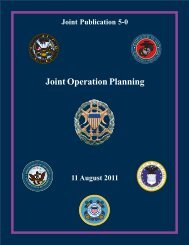JP 3-29 - Defense Technical Information Center
JP 3-29 - Defense Technical Information Center
JP 3-29 - Defense Technical Information Center
- No tags were found...
Create successful ePaper yourself
Turn your PDF publications into a flip-book with our unique Google optimized e-Paper software.
Health Service Support in Foreign Humanitarian Assistance Operationscultures of individual NGOs and IGOs, military capabilities and procedures, and affectedcountry requirements require a dedicated collaboration element to encourage and helpenable unity of effort among all participants. The civil medical affairs C2 should beestablished within the greater CMOC.c. Communications. Effective operations require a constant effort to avoid gaps inservices and redundant services. Uninterrupted communications between militaryelements, NGOs, IGOs, and affected country personnel will help eliminate unnecessarysuffering and apply resources to the operation more effectively.d. Cultural Aptitude. Health experts with foreign language, cultural competency,and interagency experience will be very valuable in a FHA operation.e. Demographics. The population mix is an important factor in the medical effort.Three specialties that are not typically included in a JTF deployment, but may be neededduring an FHA operation, are: obstetrics and gynecology, geriatrics, and pediatrics.f. Preventive Medicine. In any FHA operation, preventive medicine is a criticalconsideration. Individual personal hygiene practices and procedures are key elements ofa sound, preventive medicine program. The provision of adequate food servicesanitation, potable water supplies, vector control, disease and nonbattle injury (DNBI)prevention, and waste disposal facilities all contribute to the maintenance of a healthy andfit force. FHA operations may place US forces in situations that may substantiallyincrease the risk of DNBI. Exposure to foreign civilian populations potentially carryingendemic diseases as well as disease outbreaks as a result of a natural disaster are allfactors increasing the DNBI risk. DODD 6490.2, Comprehensive Health Surveillance,and DODI 6490.3, Deployment Health, mandate that DOD monitor and identify bothlong- and short-term health effects of US forces during deployments. This requires thatthe JTF have robust preventive medicine assets to perform medical and environmentalhealth risk assessments and identify effective preventive medicine measures to counterthe threat to US forces. In addition, the significant roles that public health andcommunicable disease control play in FHA missions further support the need for robustpreventive medicine assets.g. Disease Prevention. Natural and man-made disasters frequently give rise tosubstantial increases in endemic disease. While no parts of the world are immune toincreases in diseases, some regions of the developing world are more susceptible todisease than others, and are impacted at devastating levels. Contributory factors inspreading disease to epidemic proportions during disasters include disruption ofsanitation services, food and water contamination, and increased rodent and arthropodbreeding habitats.h. Disease Control. The risk of communicable diseases is increased in a postdisasterenvironment due to overcrowding, poor environmental conditions, and poorpublic health. For example, there is a close association between malnutrition and theeffects of communicable disease, particularly childhood diarrhea. Expert advice shouldE-3


